Graphic Design: The Art, Science, and Strategy
Author :
- The Art Behind Graphic Design
- Science Behind Graphic Design
- Strategy Behind Successful Graphic Designs
- What Is Graphic Design?
- Form in Graphic Design
- Examples of Graphic Design
- 11 Types of Graphic Designs
- The Importance of Graphic Design in Busine
- What is a Graphic Designer?
- Tools That Power Modern Graphic Design
- Graphic Design Trends
- The Balance of Art, Science, and Strategy in Graphic Designs
- Join Artisticore: Where imagination Meets Intention
It is always the graphic design that we look at before we even read the slogan. This is the secret behind every successful brand marketing. They focus on graphic design because they know how it is the only thing that can pause scrolling.
The Art Behind Graphic Design
To understand what is graphic arts, look at the successful brands like McDonalds and Apple. This is a whole science and strategy behind those golden arches or Apple’s half bitten logo. Looking at these graphic design examples of work, you will understand how they set the bar so high.
Science Behind Graphic Design
Art is not just any picture or painting; art is a combination of creativity and commination. This is the answer to what do graphic designers create. They create a source of visual communication for their clients to communicate with the target audience.
If you are someone looking for good graphic design examples for beginners, it is advisable for you to start with what is simple graphic designs. Understand how it is a language that grasp attention in less than 8 seconds.
Strategy Behind Successful Graphic Designs
According to DMI, design driven brands and companies outperform their competitors by 219% This is one of the reasons NMSG claims that the global graphic design market size will reach up to $78.25 billion by 2023. One of the studies also claims that the demand of graphic designer will increase by 3% by 2031.
For you to get into this field require a strategic mind and polished design skills. Learn to transform concepts, ideas and stories into visuals. Look around, everything including websites, app, even the fonts on your coffee cup are designed.
In the world we are living in, viewers turn into buyers when you excel to sell both products and stories. The only difference between a good and a memorable design is strategy. Understand your product, target audience, approach, and how viewers attitude towards your brand.
What’s in for you?
This blog is serving a large number of audiences, designers, readers, brands, businesses, viewers and buyers. By the end of this blog, you will know the meaning of graphic, basics of graphic design, types of graphics, and different types of designers.
This is one of the graphic design blogs complimented with real-world examples. These examples will help you understand better how brands can capture hearts, clicks, and loyalty with visuals.
What Is Graphic Design?
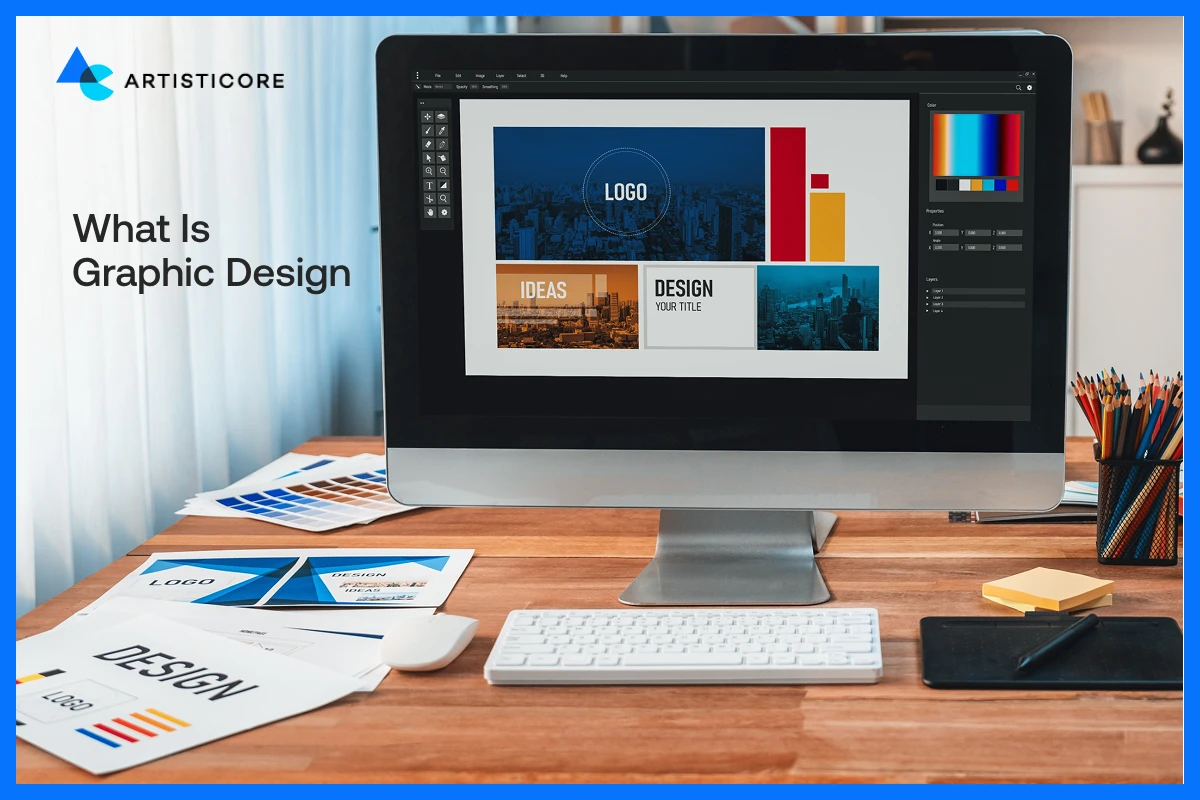
Basically, graphic design is the art of visual communication. It is the combination of creativity, strategy and storytelling put into images that can inform, inspire and influence.
Each design elements such as shape, line and color serves a purpose. The purpose could be to drives attention, entice emotion or creates connection. There is a use of text, symbols, and icons that also convey a certain message.
What is graphics? Graphic has its origin in the Greek graphikos, meaning to draw, or to write. A nonverbal language but potent language of design.
Have you ever taken a moment to stare at poster, social media ad or a magazine page? Giving a damn to stop passing by is what define design. An absolutely mesmerizing art that makes you stop and stare.
Introduction to Graphic Design for Beginners
Graphic design for beginners is basic. It is about understanding the core principles which includes balance, alignment, color, and font style. At first, you do not need complex tools.
Take inspiration from other graphic design examples and duplicate them using free platforms such as Canva or Figma. These are the tools that can help you experiment with fonts, line shapes and make consistent layouts.
Keep in mind, cool graphic design and illustration is only possible when you keep it simple and classic. Simplicity or minimalism often wins. For example, the homepage of Google that only has a logo and a search box on it. Simple right? But see how it is globally recognized on the spot.
Designers Approach
A credible art is always self-explanatory. It is the graphic design art that combine creativity with purpose. The kind of expression that delivers and connect. Do you know what is a graphic artist? It is someone who paints emotions.
On the contrary, graphic designer identify those emotions and use them to create visuals. This is how we get visual design examples that remain memorable for years.
Different types of graphic designers approach the art of graphic design differently. But a skilled designer will know what kind of color, layout, font type, hierarchy is going to be a success.
If an eco-sustainable brand asks for a poster, the graphic designer will definitely incorporate green and bold typography. Why? Because color scheme is a thing and it does provoke a certain emotion.
Definition of Graphics in the Modern World
Graphics designs today are much more than drawings or pictures. They are digital design examples such as websites interfaces, application icons, 3D images, and motion graphics. These graphic design types determine the way users interact, experience and navigate digital platforms in their daily lives.
The question what does graphics mean has changed with technology. It is no longer a print design examples, good layout and typography. However, it is mainly about responsive web interface and an immersive brand experience.
These are all the part of the same creative ecosystem whether you are creating a brand logo or an Instagram post.
Form in Graphic Design
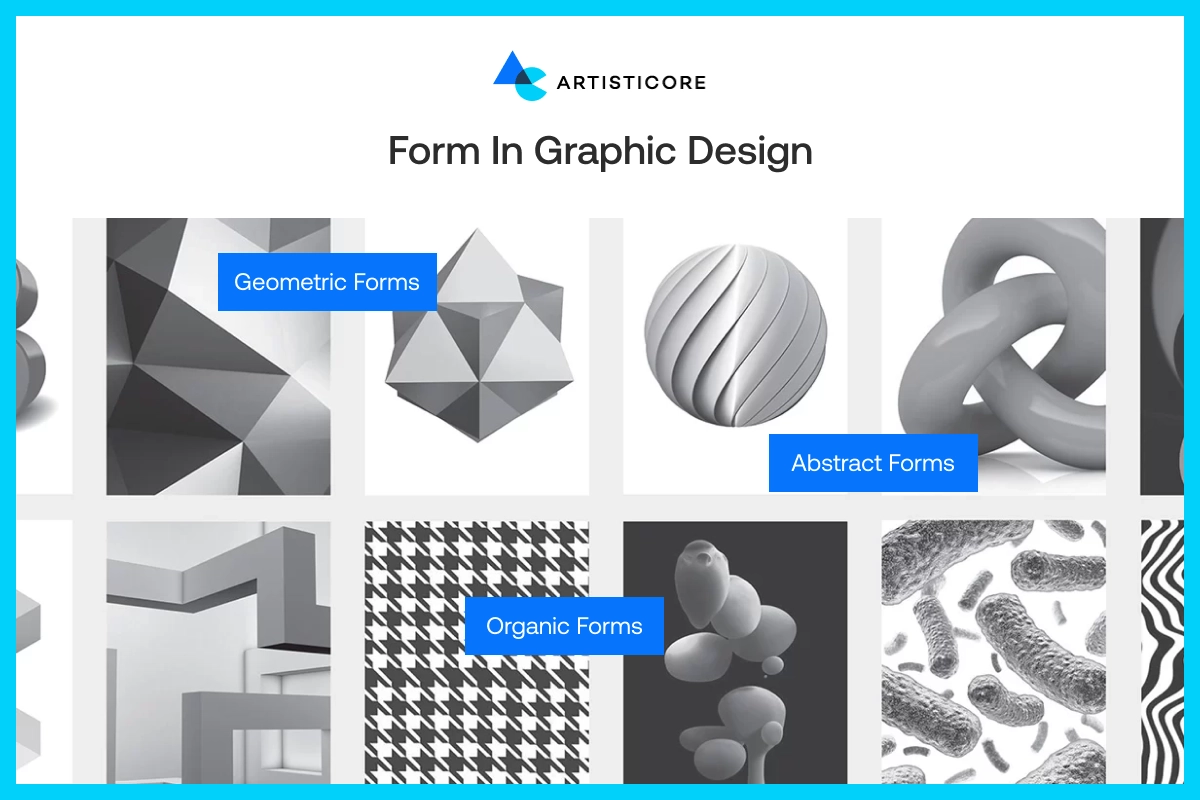
The term form graphic design is used to describe the 3D nature of an object. It is the way an object appears, feels and takes up the space. It is one of the most important elements of design after color, and texture.
Basically, forms and shapes are different from each other. Shapes are flat means 2D and forms are more realistic because of its 3D nature. If you add form in a circle, it will turn into a space, making the object look more real and interactive.
What graphic designers do is they use forms to provide a visual hierarchy, contrast and focus. This way, every flat surface object gets more depth. In 3D drawings, product mockups, and logo design, depth is added using shadows and gradients.
| Type of Forms | Examples | Feel | Symbolism |
| Geometric Forms | Manmade shapes such as circles, squares, rectangles, & triangles. | Order, rigid, and clean feel. | Gentleness, continuity, stability and seriousness |
| Organic Forms | Naturally flowy or irregular shapes that mimic nature such as leaves or water. | Natural or emotional feel | Growth, softness, and authenticity |
| Abstract Forms | Stylized version of real objections, used in logos or icons. | Modern and unique feel | Creativity, innovation, and conceptual thinking |
Examples of Graphic Design
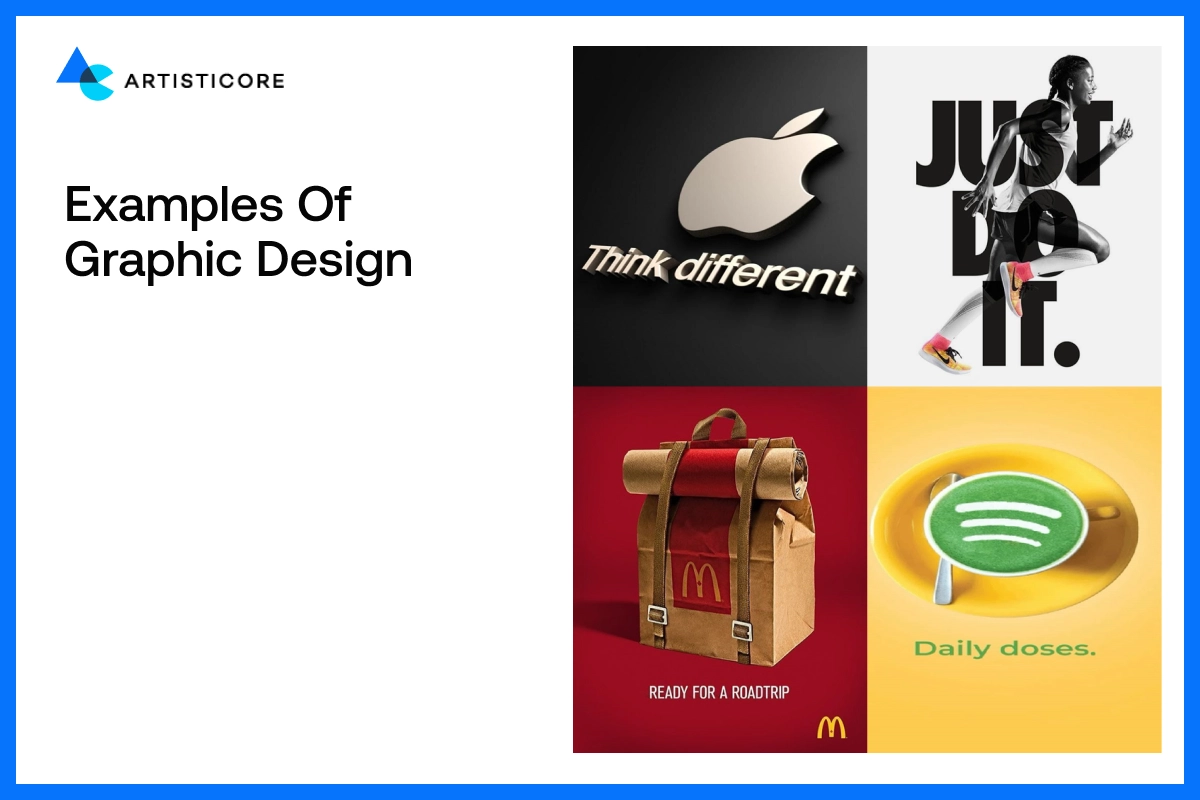
The art of graphic design surrounds us all the time. Whether it is a cereal box you open in the morning or the illustration graphic design on the app you scroll at night, you will see how graphic design is everywhere.
A graphic designer work on the looks as well as functions. They create visuals that conveys ideas that shape the way people think and feel.
Consider print design examples such as magazines or the packaging of the products. They are the examples of how layout, color and typography form emotional bonds.
On the digital front, banners, social media posts, and ads show how motion, hierarchy, and storytelling can create engagement.
The first step of how to do graphic designing is to observe. To see what works and why? Observe the graphics examples of big brands and learn how to make a graphic design of your own.
Remember, every project has its own objectives. Graphic designer examples such as the bold typography of The Public Theater by Paula Scher or the experimental album covers of Stefan Sagmeister prove how vision becomes eternal images.
Balance, contrast, and meaning are the three principles that each designer perceives differently. This is the reason why the graphic design ideas keep evolving.
Other Notable Example of Graphic Design
Let’s look into some of the best graphic designs examples created on both creativity and strategy.
Spotify Wrapped Campaign
A digital design masterpiece with visual storytelling. Its vibrant designs, light and playful fonts, and customized images turn factual data into an emotional experience.
Apple Minimalist Product Design
Apple designs show how less is more with its clean layouts and product packaging. Their print design is smart and elegant, conveying a sense of trust and elegance.
The “Share a Coke” Campaign by Coca-Cola
This is an excellent combination of branding and personalization. Coca-Cola redesigns its packaging into a global interactive campaign by adding names into its label design.
11 Types of Graphic Designs

Graphic design is a wide creative industry that has many specializations. All of them have a unique role but collaborate to form the way we see and experience brands. Let’s talk about the key categories and learn what is unique about each one of them.
Brand Identity Designs
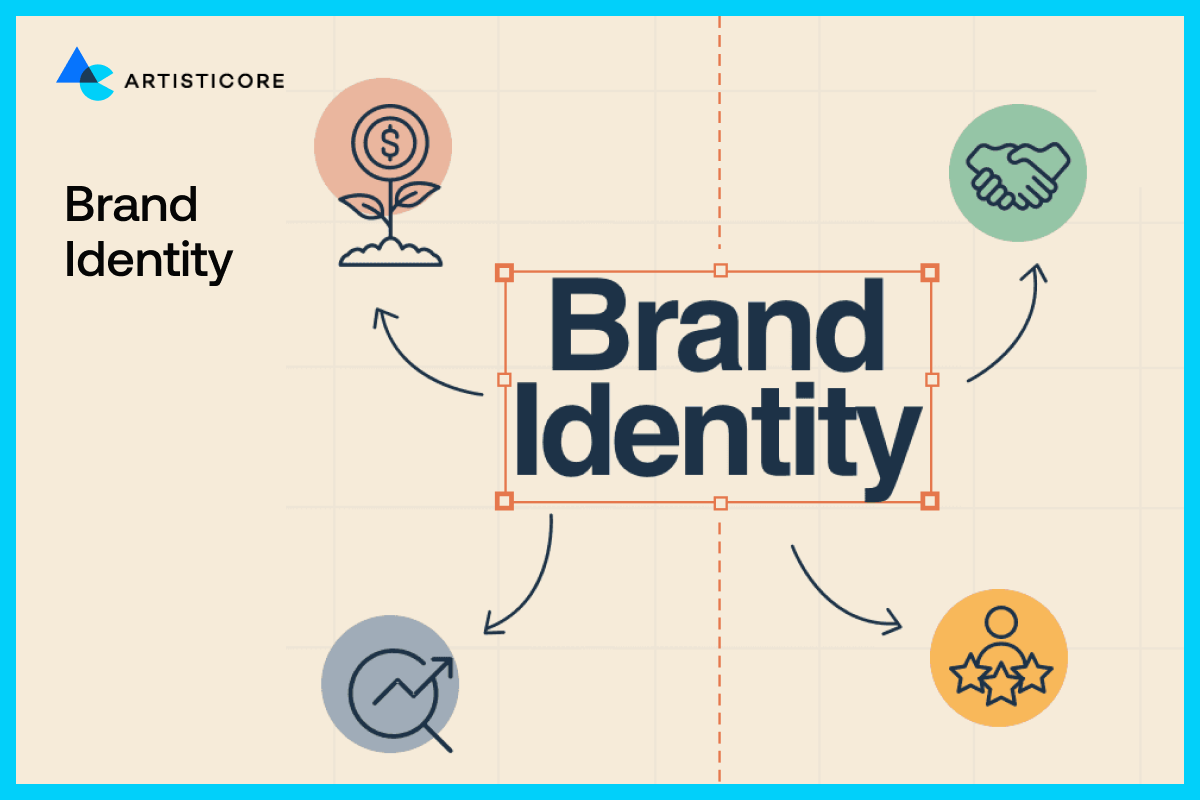
They provide businesses with its visual identity. These includes logo, color scheme, typography and style in which people recognize it.
When you look at Apple or McDonalds, you will notice that their brand designs are more than decoration. They are their whole identity.
These types of graphic design create a feeling of trust and recognition, a personality which people do not forget.
Marketing and Advertising Designs
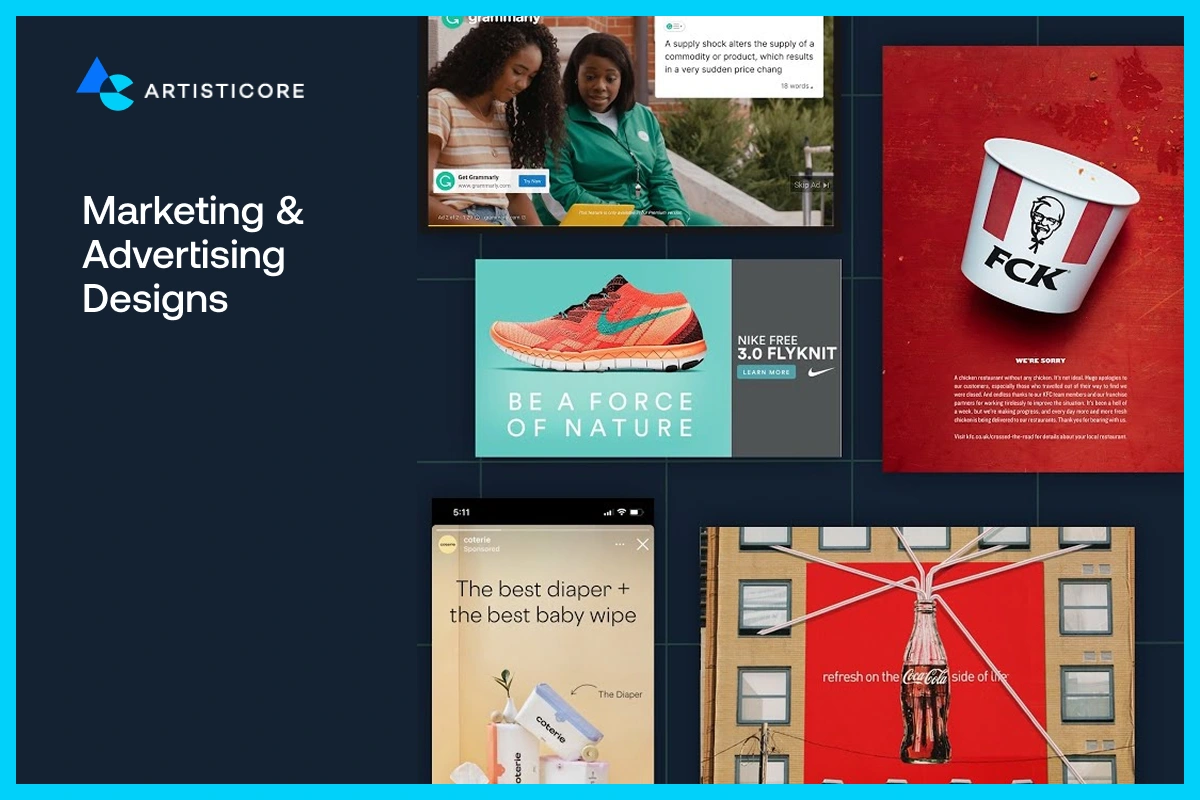
Next comes marketing and advertising design. The one that catches your eye on a billboard, social media and packaging. It is what helps brands sell graphic ideas in the form of storytelling.
An eye-catchy advertisement design makes you stop scrolling and invest time looking at it. Likewise, a good marketing campaign is nice to look at even the second time.
Basically, what works is the use of color, words, and images that resonate with viewers on an emotional level. These graphic design elements make visuals persuasive.
User Interface designs
UI design, or user interface designs are the designs we see every day on websites, apps, dashboards, or smart devices.
In this kind, the designers play with the art of organizing buttons, text and images in an intuitive manner.
When you open Spotify or Netflix, you observe how everything feels smooth and natural. This is due to good UI design which simplifies digital interaction, making it clean and fulfilling.
User Experience designs
UX design is a closely related field to UI design. It deals with what people experience using a product. For example, UI takes care of the appearance, but UX takes care of the flow.
UX ensures that every click, scroll, and touch feels right. An effective UX designer will play around psychology, strategy, and emotion in his designs.
This is the only way to produce digital experiences that are both easy and pleasant.
Packaging designs

These make tangible products alive. This is what you see on the shelf even before knowing what is inside. A carefully crafted package tells the story of a brand at the first look.
Have you seen how Apple boxes look so sophisticated or the sustainable appearance of the Lush cosmetics? This is because packaging is both art and functionality.
It makes sure that the product stands out without being over-the-top.
Motion Designs

Motion graphics is where the visuals are playful. This assists brands in conveying personality and energy through animated social media ads and explainer videos.
Anything created by Netflix such as the intro or the animated brand logos that you can find on YouTube are examples of motion designs.
These shows how motion brings rhythm and emotion to design. It is one of the most rapidly expanding types of designs nowadays. The reason being digital audiences who respond more to motion than still images.
Publication designs
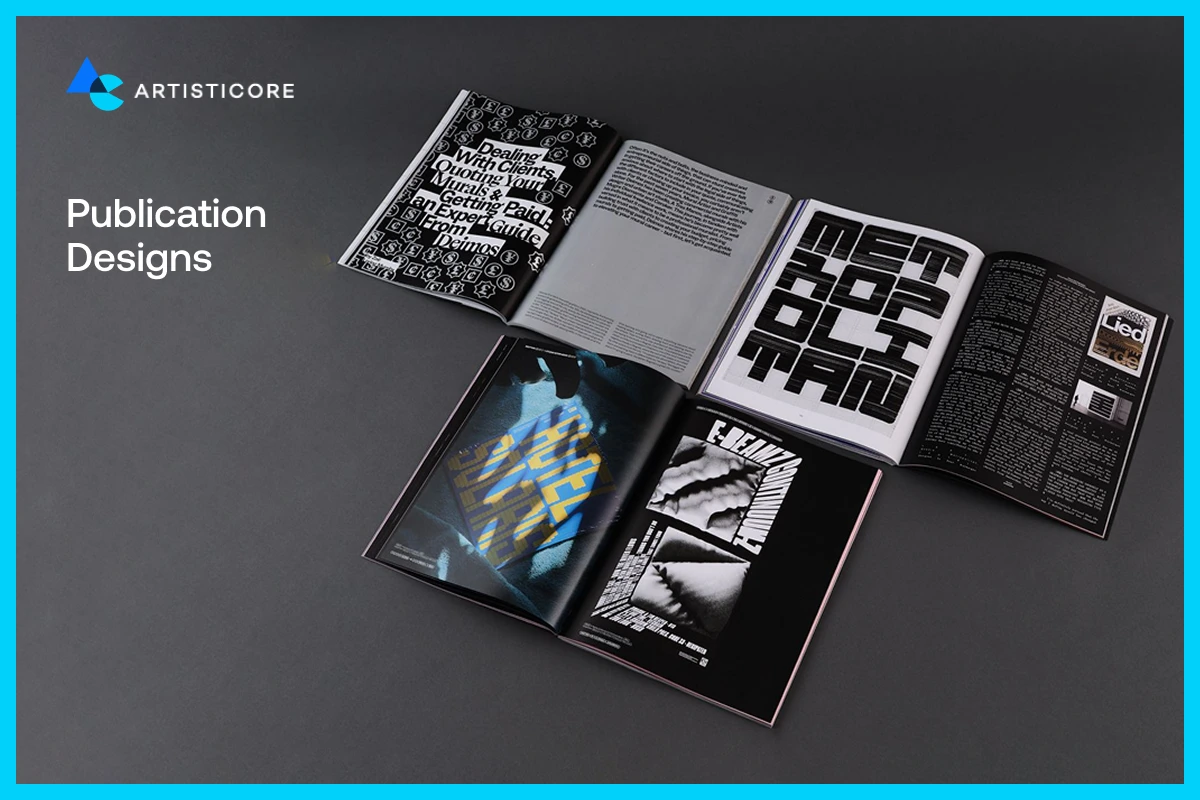
They are all about organizing written material in a much beautiful and organized way. It contains magazines, books, brochures, and online articles that are well balanced in terms of imagery, text, and white space.
In publication designs, designers ensure that reading is fun. Look at the layouts of National Geographic or Vogue and see how they flow in a direction.
This is the art of publication designs which shows how structure and narrative make content not only readable, but memorable.
Environmental design
Experiential design or environmental design fill the gap between designs and the real world. It exists in museums, exhibitions, offices, and stores where the surrounding tells a brand story.
When you enter Starbucks and get cozy vibe because of its natural sounds and light, that is the work of environmental design.
Art and Illustration Designs
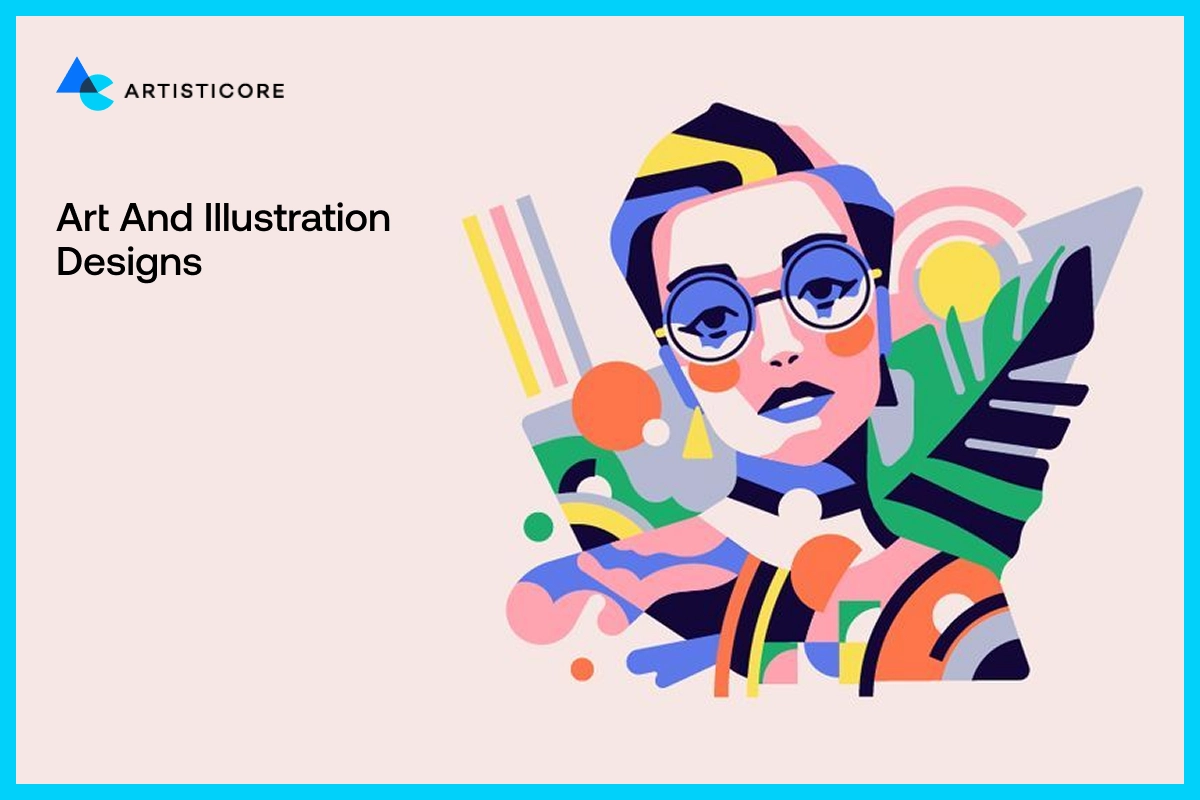
In these types, designer meaning to add a personal touch to images. Art designs focus on layout and structure, whereas in illustration designs, the focus is on uniqueness and innovation.
Designers add a unique touch with hand drawing, digital sketches and character designs. It all depends on how far and unique a brand wants to be.
For example, look how the doodles of Google or the cute drawings of Dropbox add a human touch in technology. This type of creativity is what makes the whole experience more relatable and friendly.
Web Design
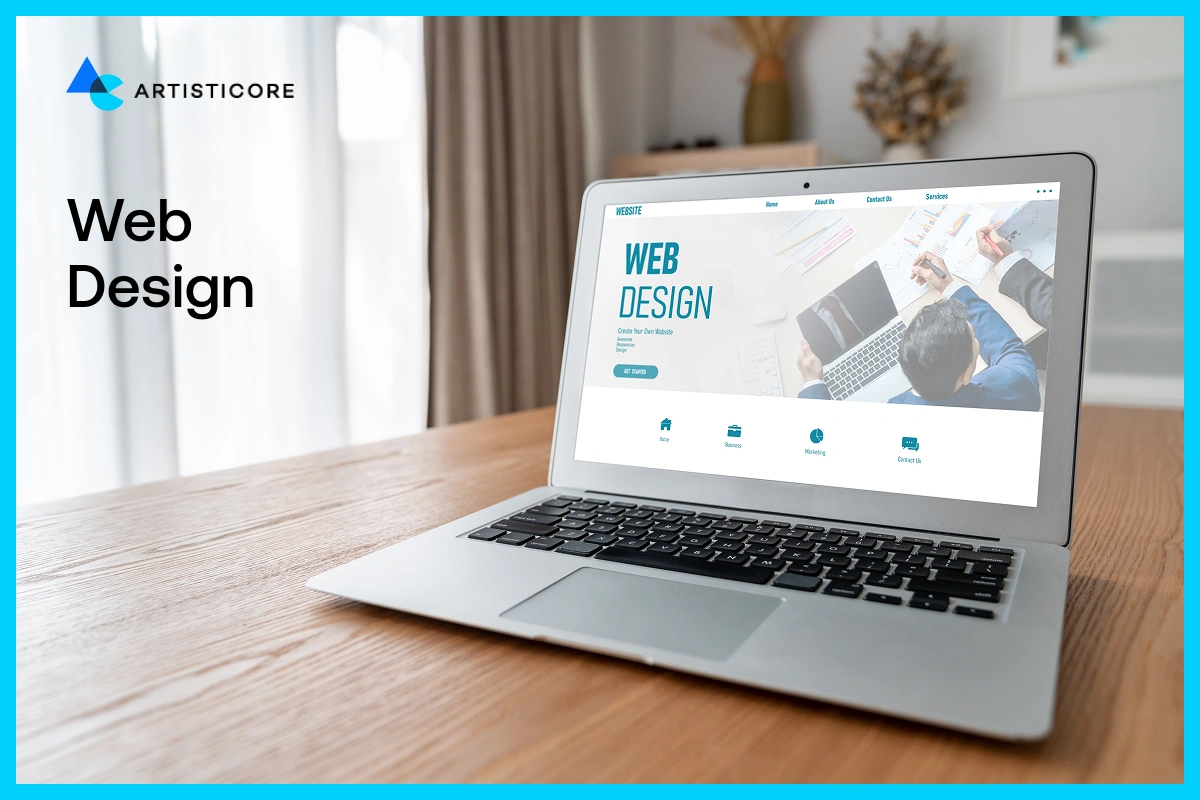
Web design is the combination of different types of graphic designs. The question is, what do you do in graphic design that require attention to the appearance, functionality, and size navigation?
You basically hire the one who knows that each detail counts, be it easy navigation or responsive layouts.
Brands LIKE Airbnb or Apple confirms how a good web design can direct users without any confusion. Their websites convey a well-defined personality which is the basis of online presence.
Infographic Designs
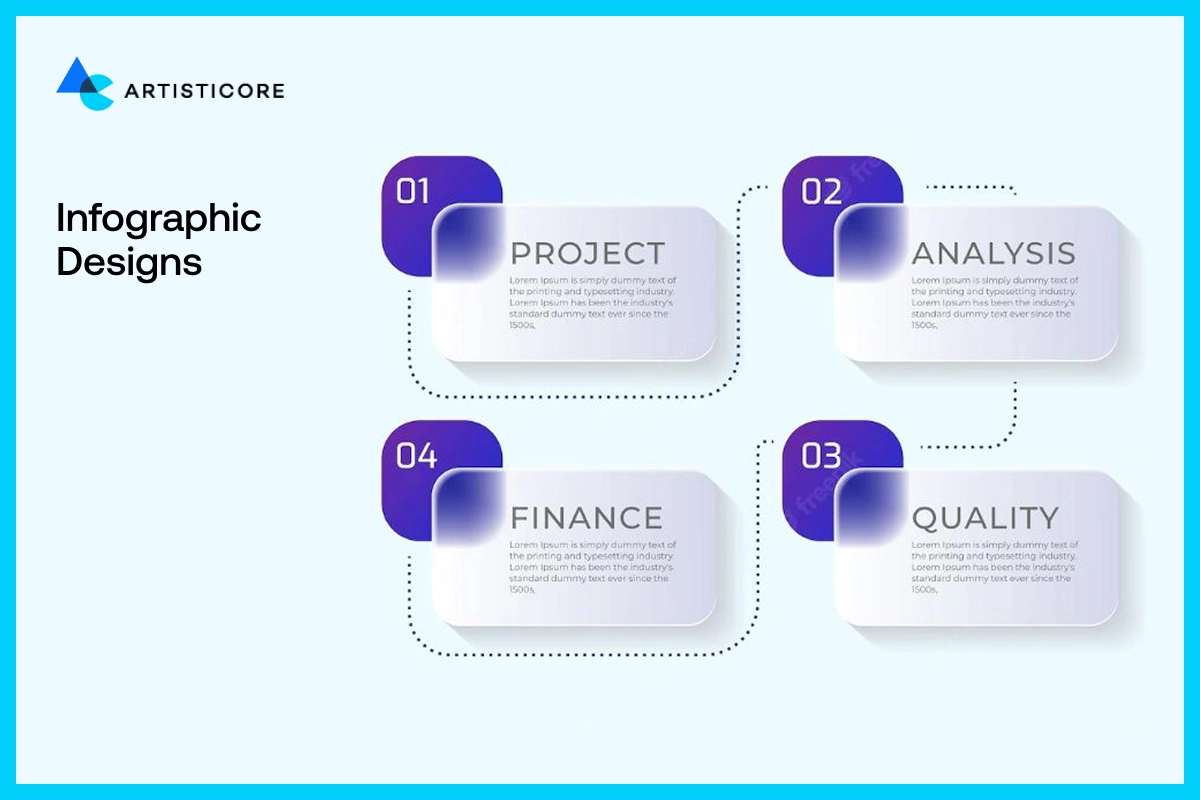
Finally, data visualization or infographic designs break down complicated information into user-friendly visuals.
Infographics play an important role in a world with plenty of data, with icons, colors, and layout. These kinds of designs facilitate quicker understanding of the facts for readers.
For example, big names like New York Times and Bloomberg use infographics to present complex news. They make use of data visualization tools to make data beautiful and informative. Such designs prove that the images can be educative as well as appealing.
A combination of all these 11 types is the backbone of the modern communication. All of them have a different role to play, either building bran identity, enhancing digital experiences, or making information easier.
Graphic design is everywhere, mainly used to translate ideas into images that connect, inform and inspire.
The Importance of Graphic Design in Busine
Graphic design help business associate, communicate and expand. Anything your brand posts on the internet, be it your logo or an Instagram post, tells a story about you. Design works a silent salesperson, help cultivate trust even before a single word is read.
Having a powerful visual mark will make people recall your brand. A study conducted by Design Council UK showed that companies that invest in design outperform others by more than 200 percent in the stock market. The reason is that design brings quantifiable value–it eases the information, appeals to the eyes, and forms emotional bonds.
A local cafe creating its first logo or a global company updating its website, every business requires a consistent visual image. This is what graphic design basics tell us about. To assist brands in having a trustworthy image at each touchpoint.
A good graphic design description is not just about style but purpose. It demonstrates how images can help in establishing communication and brand identity.
What is visual design without creativity and strategy? Nothing, because visual design is what steer your customer flow in the right direction. It also makes your brand instantly identifiable in a saturated market.
Can you recall the last brand that caught your attention? It wasn’t a random pick. That spark? It comes from smart design. This is what Artisticore is all about, clear, clean and functional designs.
What is a Graphic Designer?
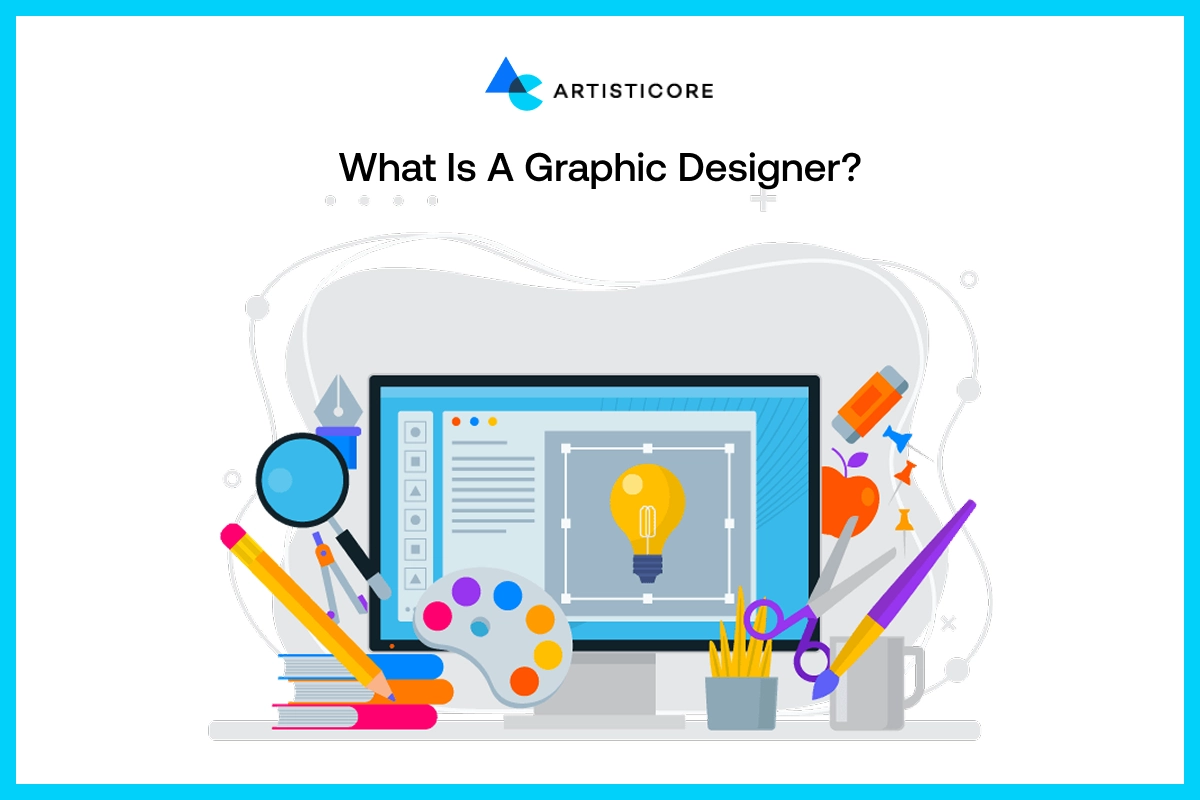
A graphic designer is a visual storyteller. It is someone who combines creativity and purpose together to transform ideas to visuals that convey as clearly as possible.
What Do Graphic Designers Do?
Wondering graphic designer what do they do? Well, they put ideas on a piece of paper and then create images that resonate with the masses.
They create logos, brochures, websites, postings in social media, and packaging. Pretty much everything you see on digital or print media. A designer can design a website for a startup but also a vibrant marketing campaign for a lifestyle brand.
Whatever they decide to create, be it color, line, or form, every creation is well thought and serve a purpose.
Types of Graphic Designers
Graphic design is a broad field. There can be different types of designers working on different things or just one or two skilled designers doing it all.
- Branding designers create logos that has a striking appearance and memorable feel of the business.
- Website and user interface designers concentrate on the pleasant online experiences.
- Print designers create visuals using tangible material such as books, posters, and packaging.
- Motion designers animate and make images alive by using video and animation.
The purpose of each design piece is different and so is the role. It requires an artist, scientist and strategic mindset to be a graphic designer. And even after that, all comes down to the ability to deliver art that communicates.
What Do You Need to be a Graphic Designer?
Talent alone is not enough because what does graphic means? What are graphics? They are a combination of creativity, strategy, and technical expertise, right?
The designers should be able to use tools such as Adobe Illustrator, Photoshop, and Figma. They need to be aware of intro to graphic design and graphic feature definition that talks about the importance of the knowledge of human psychology and storytelling.
It is really what it takes to be a graphic designer, someone who knows graphics, who can think visually, keep up with trends, and come up with timeless designs.
Tools That Power Modern Graphic Design
Two things, proper tools and crazy imagination is the reason behind any great design. Modern graphic designers use potent tools to transform their ideas into realities with accuracy and speed.
There is Photoshop to edit images, Illustrator to design vectors, and InDesign to make layouts. The industrial standard is still Adobe Creative Cloud. For easy collaboration, there is Figma that helps teams design and prototype in real time.
Not all designers require advanced software. There are tools like Canva and Procreate that beginners can use with freedom to experiment.
One more thing, AI-based technology like Adobe Firefly and Midjourney has changed the way we design, automate, and visualize image creation. But the fun fact is that these tools can never substitute creativity, they only outshine it.
AI tools help designers to test ideas more rapidly. It generates thousands of ideas and inspiration that makes it easy for you to focus on story.
Graphic Design Trends

Design also evolves just like us humans. As we move forward and experience new things, new place and new cultures, both humans and design change. They never remain the same. More technology and tools come into existence and we end up with new varieties of designs.
Minimalistic designs with clean and clear feel, 3D design and motion graphics are still trending. You know why? First, because of the kind of presence they give and secondly, they can transform online experiences for brands by adding depth, interactivity and realism to images.
Another graphic design trend going viral is inclusive and accessible design. These aim at producing images which resonate with anyone, irrespective of their background or disability.
Data visualization is also becoming popular among brands. They transform daunting information into simple and compelling narratives. a mix of design and insight.
Graphic design will now help brands and business predict the way people see, feel, and interact with them. Want to be amongst the most successful designers? Then do not simply follow the trends but use them to create emotional relationships with audiences.
The Balance of Art, Science, and Strategy in Graphic Designs
Graphic design is a ballet of art, science, and strategy. Art is the soul of design. It is the feeling that attract people.
Science is the background. It educates on how colors change moods, how eye wanders over a page, how images aid the memory.
And strategy provides guidance. It makes sure that all creative choices serve purpose.
Powerful brands take this balance very seriously. For example, Apple who uses minimalistic design with its psychological accuracy and strategic clarity.
Nike add rhythm and movement to images that motivate and increase the desire. When creativity, logic, and purpose are combined, it communicates.
Designs serve a purpose and at Artisticore we design with that purpose in mind to transform ideas into images that can speak louder than words.
Conclusion
Any successful or big brand starts with an idea. This idea is a grain of imagination that becomes an identity. Graphic design further adds voice into it. It gives meaning to colors, forms, and words.
By then, the graphics and the visuals are no longer just beautiful images. They carry the art of appearance, the science of sight, touch, and retention in people.
The most effective designs are not loud. They don’t scream but talk, tell stories, inform judgments, and generate familiarity.
With good graphics, the brand becomes a familiar face within a world full of noise. That is where a strategy comes in, knowing what makes people hold, relate, and care.
At Artisticore we treat visuals and graphics as a language of emotion and purpose. Each pixel, line, and space we use serve a purpose. The purpose to create brands not only visible, but also memorable.
Join Artisticore: Where imagination Meets Intention
Want a graphic design that is an interplay of art, science and strategy?
